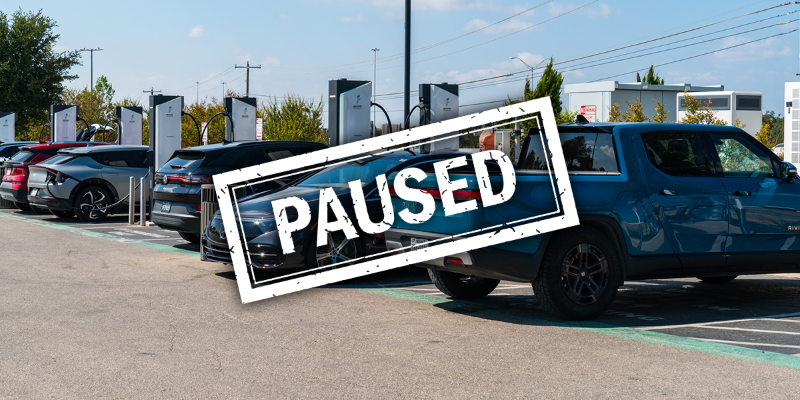Approaches for Electric Co-ops Amid an EV Funding Freeze

Earlier in February, the U.S. Department of Transportation (DOT) issued a memo suspending new funding obligations under the National Electric Vehicle Infrastructure (NEVI) Formula Program until revised guidance is provided. This update, part of a policy review to align federal programs with current economic analysis standards, invites a period of evaluation and planning for all stakeholders, including rural electric cooperatives.
Under the current NEVI framework, states are required to submit deployment plans for EV charging infrastructure, with funding obligations contingent upon the approval of these plans.
“The memo indicates that while existing financial commitments will continue to be reimbursed, no new obligations will be accepted until the updated NEVI guidance is finalized,” CFC Director of Utility Research & Policy Brian Sloboda said. “This approach allows the DOT to ensure that the program remains efficient and consistent with broader policy objectives.”
A recent Politico article, “How Trump Is Braking the EV Charging Effort,” noted that some of the current policy adjustments bear similarities to earlier administrative approaches. The article observes that these changes have sparked discussions among industry stakeholders about the best path forward for expanding the EV charging network.
“Importantly, these adjustments are part of a broader process that often accompanies transitions between administrations, aiming to refine and enhance program effectiveness,” Sloboda said. “For rural electric cooperative executives and senior staff, this development presents an opportunity to reassess strategies and explore new avenues for progress in EV infrastructure deployment.”
Electric cooperative leaders have several key considerations for navigating this transition:
- Stay Informed and Engage: Assign an individual to monitor ongoing regulatory updates and engage with federal and state policymakers. Active participation with statewide associations, national cooperative organizations and other cooperatives can provide valuable insights and help ensure that the unique needs of rural communities are considered in the revised guidance.
- Explore Alternative Funding Sources: While awaiting updated federal guidelines, consider diversifying funding strategies. Investigate state-level initiatives, private sector partnerships and other innovative financing options that can help support EV infrastructure projects. This proactive approach can maintain momentum, even during periods of transition.
- Integrate EV Infrastructure with Rural Development: EV charging stations offer more than just a means to support electric vehicles; they can also serve as a catalyst for broader economic development. By incorporating EV infrastructure into comprehensive rural development plans, cooperatives can enhance local job creation, business opportunities and community connectivity.
- Prepare for Adjustments: Review current contracts and project timelines to ensure a smooth transition should adjustments become necessary. A thorough understanding of existing commitments will help mitigate potential disruptions and facilitate a timely response once the revised NEVI guidance is released.
“This period of policy review is not a setback, but rather an opportunity for refinement and improved alignment with national objectives,” Sloboda said. “With proactive planning, engagement in policy dialogues and strategic diversification of funding sources, rural electric cooperatives can continue to play a pivotal role in advancing America’s clean energy goals. By embracing these changes and preparing for the transition, cooperatives will be well-positioned to support the growth of a sustainable and resilient EV charging network that benefits rural communities across the nation.”
